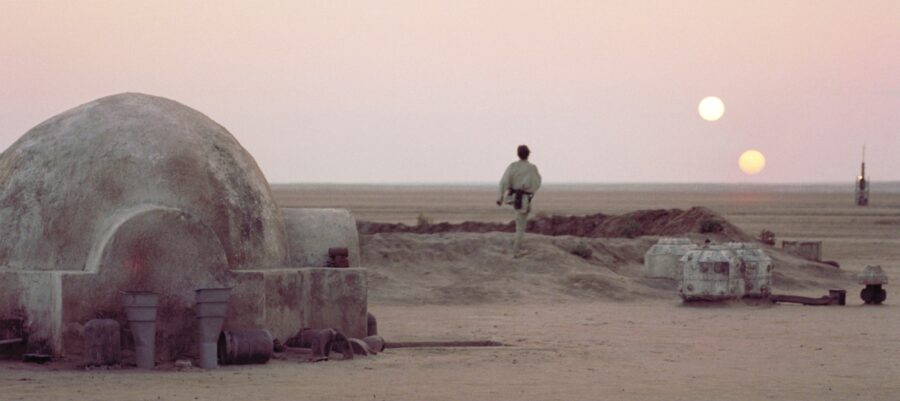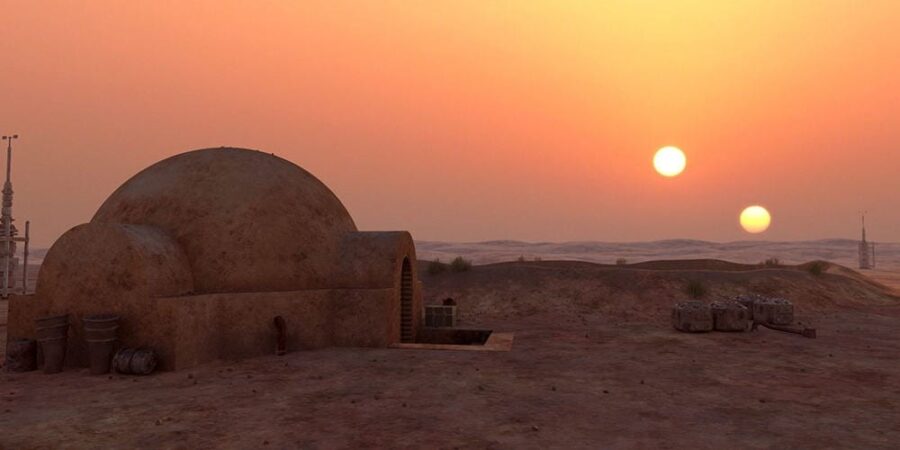Tatooine Planet Discovered Orbiting Twin Suns
Scientists found a planet that, like the iconic Star Wars planet Tatooine, is orbiting twin suns.

Fans of Star Wars and real-world space travel alike will revel in the latest news from Space.com, which reports that a new planet, titled BEBOP-1c, which resembles the conditions of Luke Skywalker’s home planet of Tatooine, has been discovered orbiting a pair of twin suns. For many years, astronomers considered the possibility of a Tatooine-style planet to be purely science fiction, as the first circumbinary planets hadn’t been discovered in the distant reaches of space until 2011.
While binary stars have been known to orbit one another in the Milky Way galaxy, circumbinary planets orbit a figure-eight-style pattern circulating around both stars of a binary system at once, making the incredible visual of a dual sunset on Tatooine from the original 1977 Star Wars film a reality for any microscopic living creatures inhabiting the distant exoplanet. The lead astrophysicist conducting the study, Matthew Standing, explained to reps from Space.com that the very first planet in this style, Kepler-16b, was discovered over 5,000 light-years away in the constellation Cygnus, the Swan.
Kepler-16b was named after the deep space telescope, which rooted it out, NASA’s Kepler telescope. In recent years, the James Webb Space Telescope has done the most heavy lifting locating new exoplanets and stars in the vast reaches of space, including a series of black holes which may have been formed close to the Big Bang. For the discovery of the Tatooine planet, however, Standing and his team of scientists utilized the aptly titled Very Large Telescope located in the Atacama Desert in Chile.

BEBOP-1c is only the 15th Tatooine planet to be discovered in the infinite cosmos, making the circumbinary orbit highly rare. Of course, the concept which brings George Lucas‘ original creative vision to life proves that reality can sometimes be stranger than fiction. BEBOP-1c is a gas giant with a mass 65 times that of planet Earth and takes an expected 215-day orbit to complete a cycle around its dual suns.
The Tatooine planet also serves as an incredible lesson in inclusivity in the world of science, as a high school student helped to discover the solar system, which houses the incredible anomaly. The system in question, TOI-1338b, was found by a student making use of the Transiting Exoplanet Survey Satellite, commonly known as the TESS, recognizing a celestial body roughly the size of Saturn, with a significantly reduced mass. BEBOP-1c is the first planet of its kind to be detected using radial velocity, which measures mass based on the amount the planet wobbles as it orbits, offering scientists a quick and efficient way to estimate mass.
As Standing explained while speaking with a rep from Space.com, these new techniques are making huge impacts on modern science and society, proving that anybody with a good understanding of the math necessary to interpret their findings can make bold new discoveries without relying on incredibly expensive and sophisticated machinery not available to the general public. While early estimates suggest the gas giant is likely, not habitable for any known form of life, the Tatooine planet sure would be a beautiful place for any living creature to catch a picturesque sunset.












